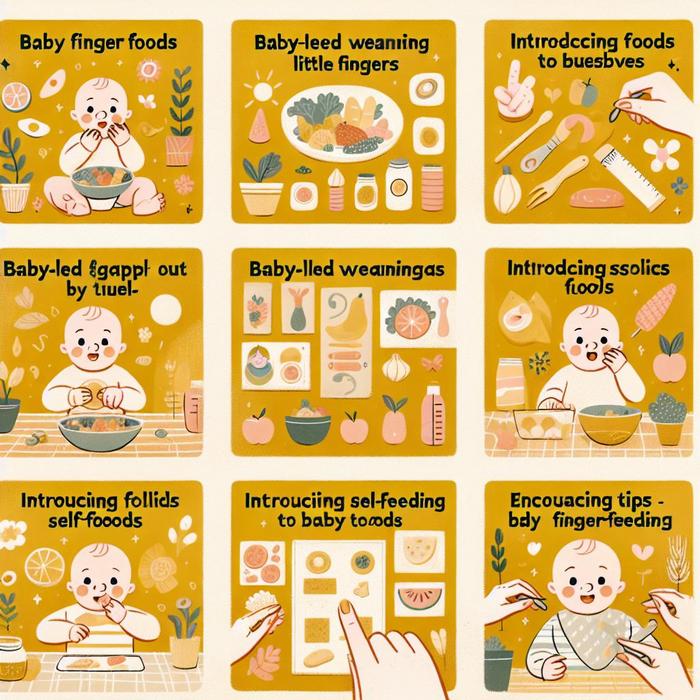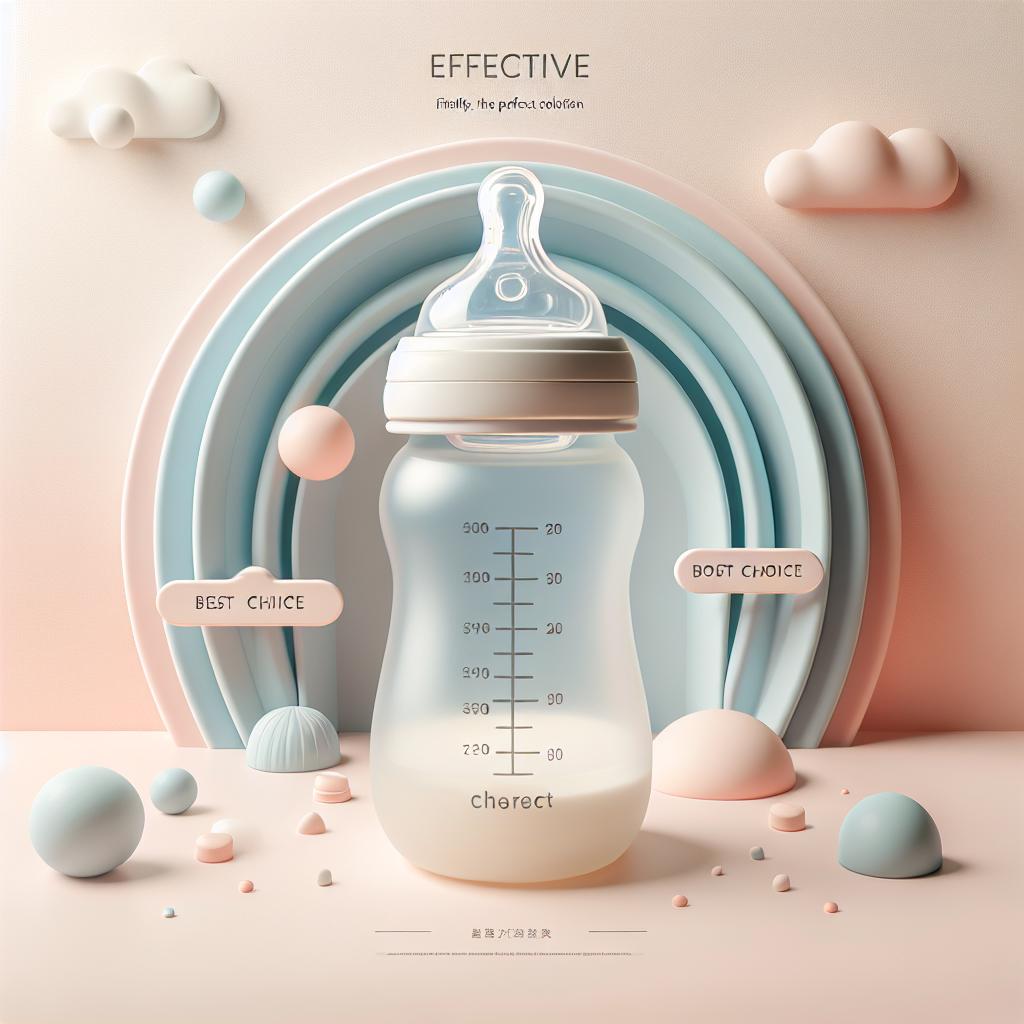Starting the Baby-Led Weaning Journey: Introducing Solids
As parents, we often look forward to the day we can introduce our little ones to solids, venturing beyond the world of milk and formula. From baby finger foods recipes to the general concept of baby-led weaning, this journey holds many exciting milestones. However, it can also be a bit daunting to step into the unknown. How do you know what foods to give your baby first and how to introduce them? How can you ensure they are getting enough nutrition? And not least, how do you handle the inevitable mess?
Understanding Baby-Led Weaning
Baby-led weaning (BLW) is a somewhat modern method of introducing solids that emphasizes the importance of babies self-feeding. It encourages exploration and enjoyment of food right from the start which can be a significant milestone in the baby’s development.
Benefits of Baby-Led Weaning:
- Encourages self-feeding.
- Helps in the development of fine motor skills.
- Allows babies to control their own intake and develop an understanding of various food textures and tastes.
For an insightful guide to understanding the basics of baby-led weaning, click here.
Introducing Solids: The First Step
Starting solids is a big step in your baby’s life, and it’s essential to take things slowly. Begin with a small amount of soft, easy to swallow foods and gradually expand the variety as your baby gets more comfortable. Be patient and give your baby plenty of time to explore each new food.
Remember, it’s always wise to consult with your baby’s paediatrician before introducing new foods and make sure to look out for any signs of allergies or discomfort. For some ideas about what to prepare at first, refer to our previous post.
From Purees to Baby Finger Foods
The journey from pureed to solid foods doesn’t have to be stressful. It’s all about progressing at your baby’s pace. Once your baby is comfortable with pureed foods, gradually introduce them to thicker textures and then small, soft chunks of food.
When moving towards baby finger foods, make sure the pieces are soft and small enough for your baby to handle. You can even begin by introducing finger-shaped spoons to help them learn how to scoop and eat. For detailed suggestions on dealing with aches and pains that can come with teething and learning to eat solid foods, refer to our blog post.
Picking the Right Baby Finger Foods Recipes
Choosing the right baby finger foods recipes is paramount to a smooth transition to solids. Foods should be nutritious, tasty, and easy to swallow.
For an excellent source of baby finger foods recipes, visit here.
When preparing finger foods, the key is to balance nutrition and variety. It’s good to include a mix of fruits, vegetables, and proteins in your baby’s diet. Don’t stress if your baby initially rejects certain foods—persistence is key.
But eating is not just about nutrition; it’s also about learning, exploring and having fun. So while it’s essential to keep meals balanced and nutritious, make sure you’re also providing plenty of opportunities for your baby to experience different tastes, textures and colours.
Guiding Through Self-Feeding
Remember, self-feeding can be a messy business. But don’t worry! A little mess is all part of the process. As parents, we need to embrace the mess and understand that it’s part of the learning process. Our role is not to feed our babies, but to guide them through the process of feeding themselves.
Creating a happy and stimulating environment is crucial for this process. You can read more about it here.
Allow your baby to touch their food, let it slip from their fingers and even throw it around a little. It’s all part of the fun and important for your baby’s development. So, take a deep breath, embrace the journey and enjoy the process of watching your baby grow and learn through food.
Helpful Resources on Baby-Led Weaning
For more insights, check out these helpful videos:
Introducing your baby to the world of solid foods is both an exciting and daunting task. Armed with the right information, patience, and a willingness to embrace the mess, the journey to baby finger foods and self-feeding will be a rewarding one.
So get started with baby-led weaning and watch as your baby embarks on a sensational journey of taste, texture, and delight. This can indeed be a delicious journey of discovery for both of you!
Foods to avoid in Baby-led Weaning
While introducing solids to your baby, there are some foods to avoid as they can pose choking hazards or cause allergic reactions. Some of these foods include:
- Whole nuts and large seeds
- Raw hard fruits and vegetables
- Whole grapes and cherries
- Large chunks of meat
- Honey (for babies under one year)
For more information on foods to avoid and strategies for safe feeding, watch this informative video.
Tips for a Smooth Transition
Transitioning from breastfeeding or formula to solids and finger foods can be a challenging time for both you and your baby, but by taking a supportive, patient approach, it can also be a very rewarding and exciting time. Here are some tips to make the transition smoother:
- Introduce new foods one at a time, this will help in identifying any possible allergic reactions.
- Start with small portions to prevent overfeeding and waste.
- Make sure your baby is seated upright while eating to avoid choking.
For more tips, watch this helpful video on how to make the transition smoothly.
Inspiring Baby Finger Foods Recipes
One creative finger food recipe to try is Broccoli Cheese Frittata Fingers. This nutritious and attractive finger food is an excellent choice for introducing your baby to the textures and tastes of solid food. The recipe is packed full of nutrients from eggs, broccoli and cheese, and it’s soft and easy for tiny fingers to grip.
Lessons Beyond Eating
Baby-led weaning is about more than just introducing solids; it’s about teaching your baby the joy of eating and the value of independence. It encourages fine motor skills development, hand-eye coordination, and a healthy relationship with food.
Remember, the aim isn’t to fill their belly, especially in the beginning. The main focus is introducing your baby to a variety of tastes and textures, and teaching them how to pick up pieces of food and get them into their mouth.
Celebrate Every Milestone
Throughout this process, it’s crucial to celebrate every tiny achievement. From your baby’s first taste of a new food to the first time they successfully grip a morsel of food and deliver it to their mouth; each step is worth celebrating.
The journey of baby-led weaning is filled with a lot of mess, laughter, and above all else – growth. It’s a remarkable experience that deepens your bond with your child and sets a strong foundation for a balance, healthy relationship with food. So let’s embrace it with open arms, patience, and generosity.
In conclusion, baby-led weaning is a journey, not just for your baby, but also for you. It’s about understanding your child’s needs and preferences, trusting them to know when they’ve eaten enough, and learning to loosen your control a bit. Because, in the end, BLW is not just about teaching your baby to eat, but also about respecting them as a capable individual.
Starting the Baby-Led Weaning Journey: A Comprehensive Guide







